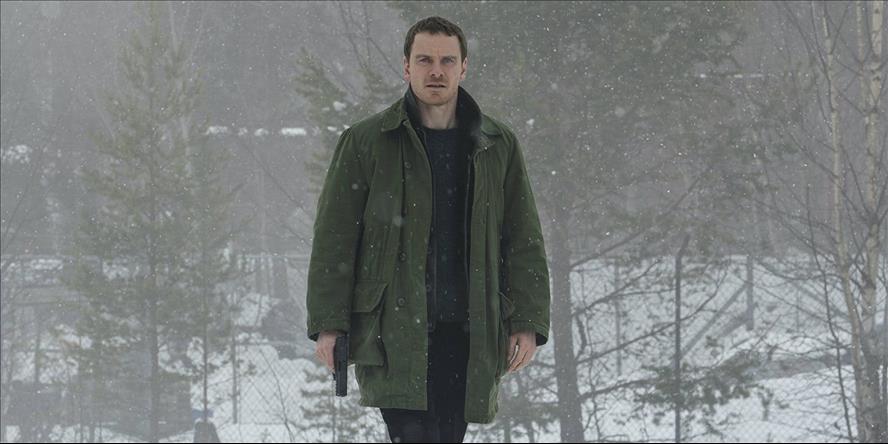
The Snowman: Nordic Noir with a hint of Dirty Harry
The tones of Nordic Noir originate in the region's uncompromising climates and landscapes and build upon the cold cultural comforts of Kierkegaard, Bergman and Munch. Its international popularity as a literary and screen genre has led to various attempts to adapt its most successful narratives for English-language audiences, including Hollywood versions of The Killing and The Girl with the Dragon Tattoo and British reinventions of The Bridge (as The Tunnel) and Wallander.
But, despite some lukewarm , Alfredson's film appears rather more successful than those other English-language attempts at the genre in its faithfulness to the cold heart of its genre.
The ice-cool Michael Fassbender seems born for the role of Nesbø's inscrutable and taciturn Harry Hole in Alfredson's adaptation. His understated performance recalls the character's origins in Clint Eastwood's and in Humphrey Bogart's deadpan hard men of 1940s film noir. Yet the film's machismo perhaps sites it closer to Dirty Harry and the traditions of American noir than to the genre into which the Nordic variety has more recently evolved.
Since Kurt Wallander's daughter Linda took the lead in Henning Mankell's 2005 novel , and (that same year) first revealed her dragon tattoo, the genre has become increasingly characterised by its strong female protagonists. A far cry from the lazy chauvinism of Harry Callahan or Sam Spade, this Scandinavian genre has, at its best, explored the conflicted heroism of the likes of , , and .
The growing (if only partial and belated) centricity of female characters to such popular narratives is not uniquely Scandinavian. As such screen stars as , and take the reins of major popular genre franchises, might the brooding masculinity of Fassbender here come to seem somewhat retrograde?
Alfredson's film, while remarkably faithful to the tone of the novel, differs from Nesbø's original in a number of aspects – not least the deaths of two main characters who survive the book (albeit hardly unscathed). These deaths take place for the sake of narrative impact and closure within the two-hour feature film. But this haste to resolution feels out of kilter with Alfredson's commitment to a genre which, at its most effective, produced a 20-hour exploration of grief and pain in The Killing's first season – and Nesbø's own ongoing, multi-novel elaborations upon the consequences of acts of extreme violence.
The strategy that it is easier to kill off characters than to come to terms with issues of emotional complexity aligns the film itself rather too closely with the mentality of its own serial killer. , by contrast, once advocated the virtues of slowness in an increasingly impatient contemporary culture. It is this capacity for quiet contemplation which has set Netflix and Nordic Noir apart from the puerile content of YouTube and the premature climaxes of so much of Hollywood's macho product.
Alfredson's film opens with the brutalisation, breakdown and suicide of a victim of domestic violence played by the Swedish actor . Helin is one of the matriarchs of small screen Nordic Noir (along with The Killing and Fortitude's ), best known for her portrayal of Saga Norén in The Bridge. One might therefore read this opening as a declaration of the film's departure from Nordic Noir's recent female-centred history. But it doesn't so much move on from the genre's focus on gender relations as it offers its own dark perspective on that subject.
Ambiguous heroThe film's core message is that the blame for the sins of the fathers tends to be visited by their sons upon their mothers and mother figures. It explores how male violence against women perpetuates itself by blaming women for that cycle of violence – and its final explicit message is that it is (of course) not the women but the men who are to blame. Key to this message are the parallels which the film draws between its villains (its emotionally distant cigarette smoker of a serial killer and his abusive policeman father) and its protagonist, the neglectful father and chain-smoking detective Harry Hole.
Sidekick: Rebecca Ferguson as policewoman Katrine Bratt. Universal PicturesThe laconic Harry Hole is no typical hero. He is, as his name suggests, something of a nothing, an emotional vacuum. (His name may also contain an implied expletive: there is something of the hole about Harry.)
Like Gary Oldman's George Smiley in Alfredson's 2011 adaptation of – and, like Saga Norén, Sarah Lund and Lisbeth Salander for that matter – he fails in his personal, social and professional relationships. His main contribution to the film's actual action is to get wounded and fall over. He is a drunkard who – in Nesbø's – skids further and further off the rails and eventually turns to opium abuse. He is, as he admits in the film's dramatic and emotional climax, fundamentally selfish. In short, he is no kind of a role model for his adopted son or for a contemporary audience. His one redeeming feature – and the film's – is that he knows it.
That is perhaps scant consolation; but in a film released as a series of shattering revelations emerged about of some of Hollywood's biggest players, its overt polemic against such bludgeoning misogyny might seem almost as timely as the blockbusting returns of such kick-ass heroines as Lara Croft and Wonder Woman. If Harry Hole, then, is a hero for our times, then it is only because (unlike Eastwood's glamorously dirty cop) this emphatically unwholesome Harry is one whose conduct serves not as a model but as a warning.

Legal Disclaimer:
MENAFN provides the
information “as is” without warranty of any kind. We do not accept
any responsibility or liability for the accuracy, content, images,
videos, licenses, completeness, legality, or reliability of the information
contained in this article. If you have any complaints or copyright
issues related to this article, kindly contact the provider above.


















Comments
No comment